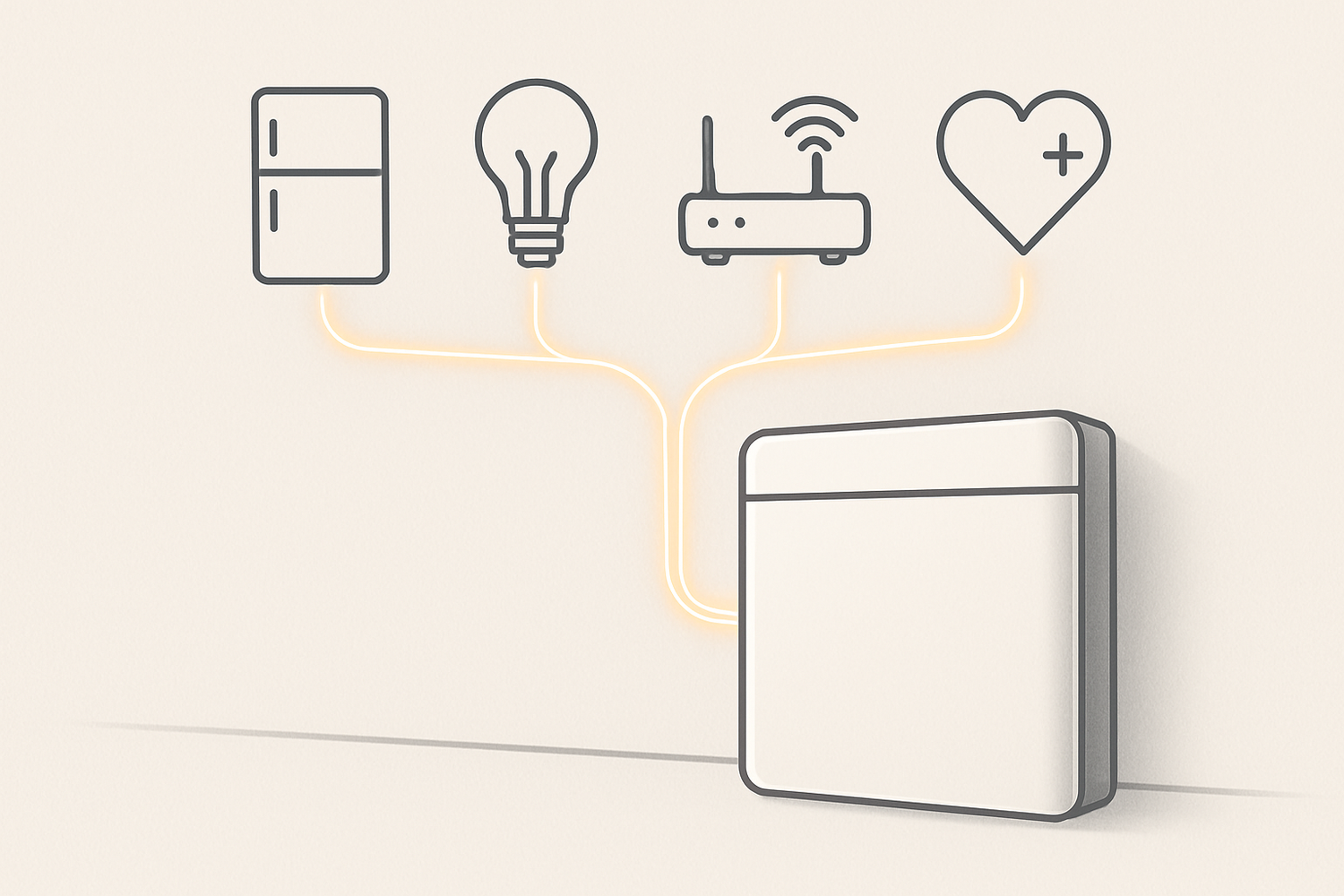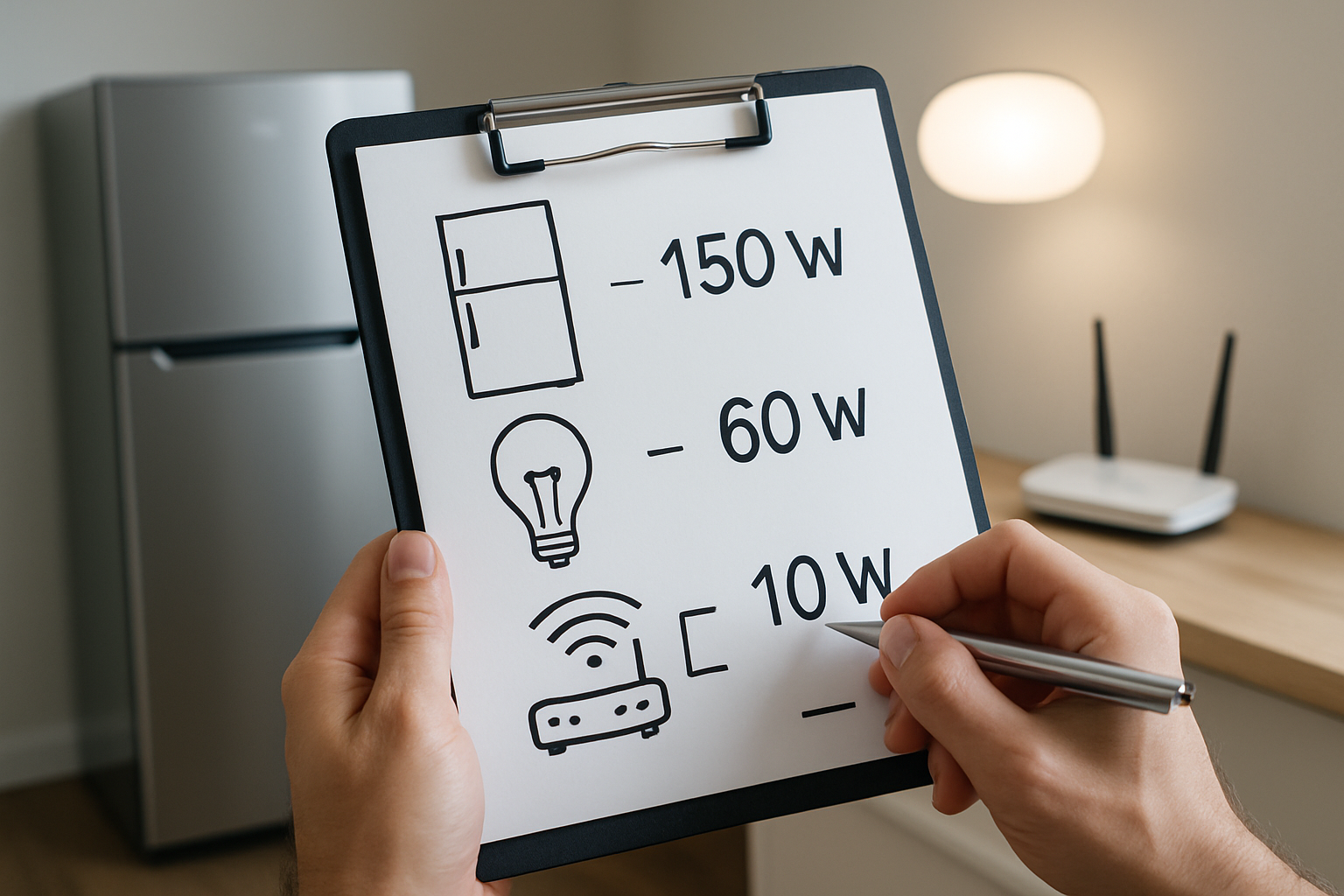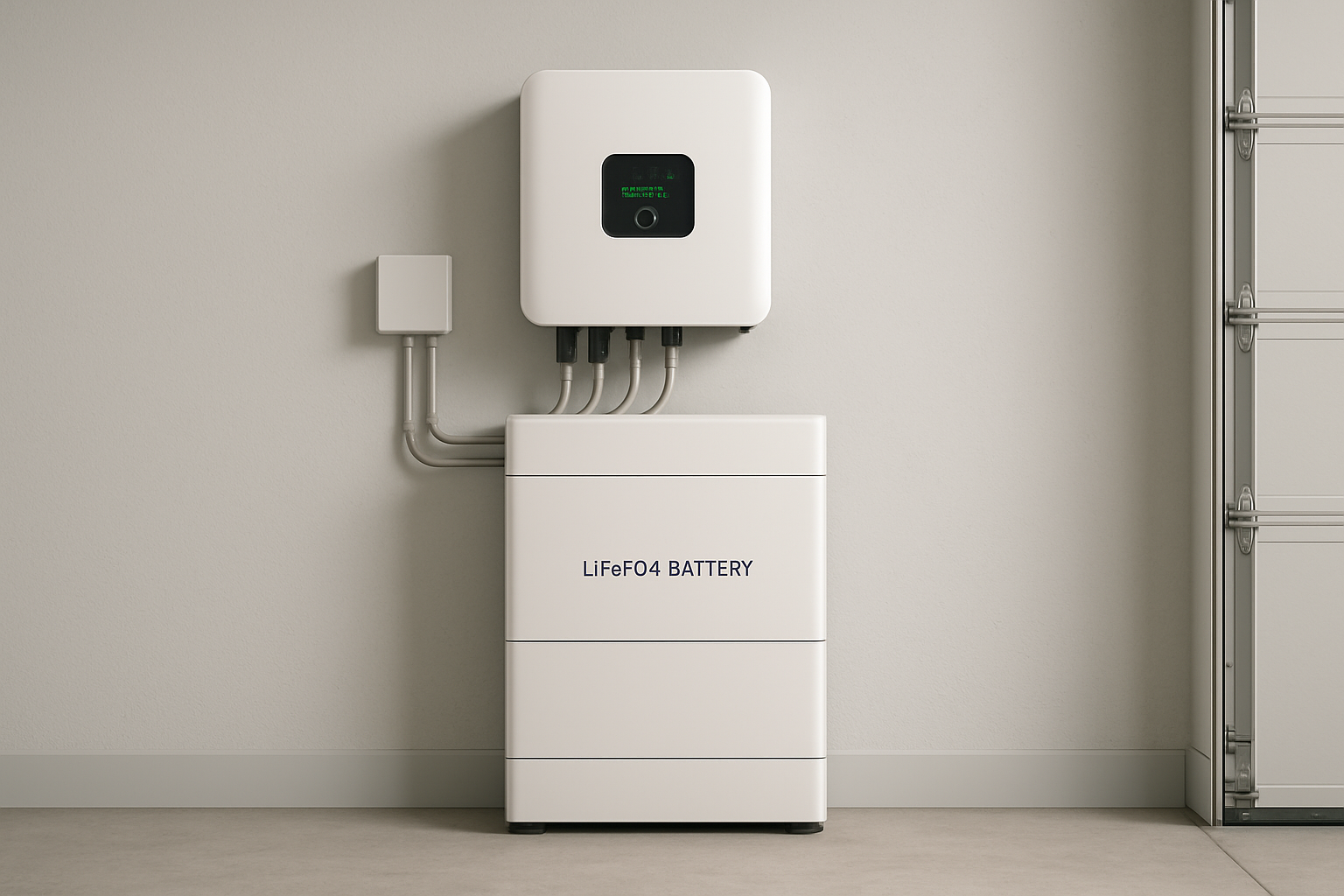A power outage can be more than an inconvenience; it can disrupt your life, compromise your safety, and bring daily activities to a halt. Having a reliable emergency power source provides security and peace of mind. But figuring out the right size for a battery backup system can feel complicated. A system that's too small will fail when you need it most, while an oversized one is an unnecessary expense.
This guide removes the guesswork. We will walk through a clear, step-by-step process for sizing your emergency power system correctly. By understanding your specific needs, you can design a solution that delivers dependable power during an outage and helps you achieve greater energy independence.
Why Battery Sizing is Critical for Reliability
Proper battery sizing is the foundation of a dependable emergency power system. It’s a balancing act. If you underestimate your needs, you risk the system shutting down unexpectedly, leaving you in the dark right when you need it. On the other hand, over-investing in capacity you'll never use means inefficient spending. The goal is to build a system tailored to your actual requirements, ensuring every dollar spent contributes to your energy security.
From years of experience in designing and deploying energy solutions, we've learned that a correctly sized system not only performs better but also lasts longer. It ensures the components, like the battery and inverter, operate within their optimal range, preventing unnecessary strain and premature wear.
Key Terms You Need to Know
Before we calculate your needs, let's clarify a few essential terms. Understanding this language is the first step in making an informed decision.
| Term | Definition | Why It Matters |
|---|---|---|
| Kilowatt-hour (kWh) | A measure of energy. It represents the amount of energy consumed by a 1,000-watt appliance running for one hour. Your utility bill is measured in kWh. | This tells you the total amount of energy your battery needs to store to power your home over time. |
| Kilowatt (kW) | A measure of power. It represents the rate at which energy is used. A 1,000-watt microwave uses 1 kW of power. | This tells you how much power your battery and inverter must deliver at any single moment to run your appliances. |
| Depth of Discharge (DoD) | The percentage of a battery's total capacity that has been used. A 10 kWh battery with a 90% DoD can safely provide 9 kWh of energy. | Higher DoD means you can use more of the battery's stored energy. Modern LiFePO4 batteries offer a much higher DoD than older technologies. |
| Round-Trip Efficiency | The measure of energy lost during a charge and discharge cycle. | Higher efficiency means less wasted energy. For example, lithium-ion batteries have a round-trip efficiency of around 81% or higher, making them very effective for storage. |
LiFePO4: The Modern Choice for Backup Power
When it comes to home energy storage, not all batteries are created equal. Lithium Iron Phosphate (LiFePO4) batteries have become the industry standard for their superior safety, long lifespan, and high performance. Unlike other battery chemistries, LiFePO4 is thermally stable and less prone to overheating. This inherent safety is a critical factor for any system installed in your home.
These batteries can also handle thousands of charge-discharge cycles, offering a service life that can exceed a decade. This durability makes them a sound long-term investment. At ANERN, we specialize in advanced LiFePO4 battery technology, developing reliable and scalable energy storage systems that empower homeowners to achieve their energy goals.
Chapter 2: The Core of Battery Sizing: Your Load Profile
The most critical part of sizing a battery is understanding exactly what you need to power. This is your "load profile." Creating one is a straightforward process of identifying your essential devices and calculating their energy use.
Step 1: Identify Your Critical Loads
During a power outage, you don't need to power everything in your house. The key is to focus on the essentials. Walk through your home and list the appliances and devices that are absolutely necessary for your family's safety and comfort. Common critical loads include:
- Refrigerator/Freezer
- Essential lights (e.g., in the kitchen, bathroom, hallway)
- Sump pump
- Well pump
- Internet modem and router
- Phone chargers
- Medical devices (e.g., CPAP machine)
Deciding between powering a few key circuits or your entire home is a major consideration. For a deeper look at this choice, see our article on Partial vs. Whole Home Backup: Sizing Your LiFePO4 System.
Step 2: Calculate Your Daily Energy Consumption (kWh)
Once you have your list, the next step is to calculate how much energy these devices use in a day. You can usually find the wattage (W) on a label on the back or bottom of the appliance. If it only lists amps (A) and volts (V), you can calculate watts by multiplying them: Watts = Volts × Amps.
Use this formula for each item: Appliance Wattage (W) × Hours of Use per Day = Daily Watt-hours (Wh)
Here is a sample load calculation table. Your own list will be unique.
| Appliance | Power (Watts) | Estimated Hours of Use/Day | Daily Energy (Wh) |
|---|---|---|---|
| Refrigerator | 200 W (runs intermittently) | 8 hours | 1600 Wh |
| LED Lights (5 bulbs) | 50 W (10W each) | 6 hours | 300 Wh |
| Internet Router & Modem | 15 W | 24 hours | 360 Wh |
| Phone Chargers (2) | 20 W | 4 hours | 80 Wh |
| Sump Pump | 750 W | 1 hour (during storm) | 750 Wh |
| Total | 3090 Wh |
This process, known as load planning, is the secret to accurate sizing. For more details, check out our guide on Load Planning: The Secret to Sizing an Emergency Battery.
Step 3: Determine Your Peak Power Demand (kW)
While daily energy (Wh) determines your battery's storage capacity, peak power (W or kW) determines the size of your inverter. The inverter must be able to supply enough power to run all your critical loads simultaneously. From the table above, if the refrigerator (200W), all lights (50W), and the sump pump (750W) turned on at the same time, your peak demand would be 1000W (or 1 kW).
Also, consider surge power. Motors in appliances like refrigerators and pumps draw a large amount of power for a few seconds when they start up. Your inverter must be able to handle this temporary surge.
Chapter 3: Calculating Your Required Battery Capacity
With your load profile complete, you can now calculate the battery capacity you need. This calculation includes important factors like system inefficiencies and how deeply you can use the battery's storage.
The Sizing Formula: Putting It All Together
Here is a reliable formula to determine your required battery capacity.
Required Battery Capacity (Wh) = (Total Daily Energy Need) / (Inverter Efficiency × Battery DoD)
- Total Daily Energy Need (Wh): From our example, this is 3,090 Wh.
- Inverter Efficiency: Inverters are not 100% efficient; some energy is lost as heat when converting DC battery power to AC home power. A typical efficiency is 90% (or 0.90).
- Battery Depth of Discharge (DoD): For a LiFePO4 battery, you can safely use about 95% of its capacity (0.95).
Let's calculate:
Required Capacity = 3,090 Wh / (0.90 × 0.95) = 3,090 Wh / 0.855 ≈ 3,614 Wh or 3.6 kWh
So, for this example, a battery system with at least 3.6 kWh of usable capacity is needed for one day of backup. To learn more about this process, read our comprehensive article, How to Size Your Home Battery for Uninterrupted Power.
Planning for Autonomy: How Many Days of Backup?
How long do you need your backup power to last? This is known as "days of autonomy." While many outages are short, major weather events can cause disruptions that last for days. According to the U.S. Energy Information Administration (EIA), the average U.S. electricity customer experienced 5.5 hours of power interruptions in 2022. However, during major events like hurricanes, some outages can last much longer. In 2021, customers in some states experienced interruptions averaging over 80 hours.
For greater security, many people plan for two to three days of autonomy. To do this, simply multiply your daily energy need by the number of days you want backup for.
For 3 days of autonomy: 3,614 Wh × 3 days = 10,842 Wh or 10.8 kWh
Common Sizing Pitfalls
Even with careful planning, mistakes can happen. Some common errors include forgetting "phantom loads" from devices in standby mode, underestimating the surge power of motors, or not planning for future needs. For a detailed overview of what to avoid, consult our guide on 5 Mistakes to Avoid When Sizing Your Emergency Battery.
Chapter 4: Beyond the Basics: System Integration and Scalability
A battery is just one part of a complete energy solution. Integrating it with solar and choosing a system that can grow with you are key steps toward true energy independence.
Integrating with Solar for True Energy Independence
A standalone battery provides backup for a limited time. When paired with solar panels, it becomes a rechargeable power source that can keep your home running indefinitely. During the day, solar panels power your home and recharge your batteries with any excess energy. At night or on cloudy days, you draw power from the battery. This synergy is crucial for achieving self-sufficiency.
The International Renewable Energy Agency (IRENA) notes that the market for battery storage combined with rooftop solar is growing rapidly, as it provides flexibility and resilience. Advanced battery systems can even provide services to the grid, such as frequency regulation, which helps stabilize the entire power network. This demonstrates how home storage is becoming an integral part of modern energy infrastructure.
To learn how to size a complete system, you can Unlock Energy Independence: Sizing Your Emergency Storage.
The Importance of a Scalable System
Your energy needs may change over time. You might add an electric vehicle, install an electric heat pump, or simply find that you want to back up more circuits. A scalable, modular energy storage system allows you to start with a capacity that meets your current needs and budget, then easily add more batteries later. This approach provides flexibility and future-proofs your investment. ANERN's home energy storage systems are designed with scalability in mind, allowing you to expand your capacity as your needs evolve.
The Role of the Inverter
The inverter is the brain of your system. It not only converts DC power from your batteries and solar panels to the AC power your home uses, but it also manages the flow of energy. As determined in Step 3, your inverter's power rating (in kW) must be large enough to handle the peak demand of your critical loads running simultaneously, including their initial surge.
Your Path to Reliable Emergency Power
Sizing a battery for emergency power is a systematic process, not a guessing game. By carefully identifying your critical loads, calculating your daily energy use, and planning for an adequate number of backup days, you can build a system that offers genuine security. The key is to focus on your unique needs and choose the right technology.
Modern LiFePO4 batteries, integrated into a scalable home energy storage system, provide a safe, reliable, and long-lasting solution. This technology empowers you to protect your family from power disruptions and take a significant step toward energy independence. With a well-designed system, you are not just buying a battery; you are investing in resilience and peace of mind.
Disclaimer: The information provided in this article is for educational purposes only. It is not intended as professional, financial, or legal advice. Please consult with a qualified professional before making any decisions related to installing an energy system.





Leave a comment
All comments are moderated before being published.
This site is protected by hCaptcha and the hCaptcha Privacy Policy and Terms of Service apply.